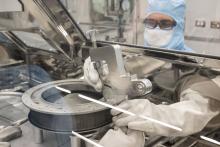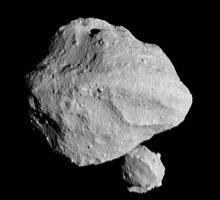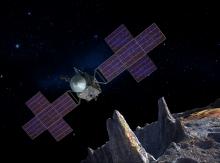Listen to today's episode of StarDate on the web the same day it airs in high-quality streaming audio without any extra ads or announcements. Choose a $8 one-month pass, or listen every day for a year for just $30.
You are here
Looking Deep
Earth and the solar system’s other rocky planets probably grew as smaller blobs of rock and metal slammed together, forming ever larger bodies. As they grew, gravity pulled heavier materials — iron and nickel — toward the middle, forming their cores. Lighter materials floated toward the top, forming the mantle and crust.
We can’t actually see the cores of these worlds. But a new NASA mission may be able to show us the next-best thing: the core of a possible protoplanet, one of the building blocks of planets.
Psyche will orbit an asteroid of the same name. The asteroid is a chunk of metal about 150 miles in diameter — the biggest metallic asteroid in the solar system. It could be the surviving core of a protoplanet. The little object’s outer layers could have been blasted away by collisions with other asteroids, leaving only its dense metallic core.
Observations by ground-based telescopes show that 90 percent of its surface is made of iron. The rest is made of various minerals. A close-up inspection of those minerals could confirm that Psyche is the leftover core of a protoplanet. On the other hand, it could show that the minerals came from impacts with other asteroids, telling us that Psyche never had a mantle or crust.
Either scenario will reveal more about how the inner planets formed and how they grew, and perhaps give us a hint of what their metallic cores look like.
We’ll talk about some other future missions of discovery tomorrow.
Script by Damond Benningfield






